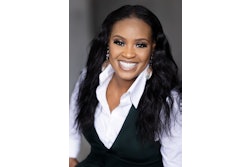DALLAS – Texas schools need to hire more Black and Hispanic teachers, especially as the enrollment of minority students continues to rise, experts said.
The Dallas Morning News reported Tuesday that two out of three Texas teachers in the past school year were White, which is a proportion that has not changed much in recent years. The state projects that minority students will make up around 62 percent of the student body in the 2011-12 school year, up more than 10 percent from a decade ago.
“The research shows that, if you can match the ethnicity and race of teachers and students, teachers tend to be more effective,” said Ed Fuller, associate director of the University Council for Educational Administration at the University of Texas at Austin. “It’s important for role modeling and pushing those students to go to college. Of course, you want to make sure teachers are well-qualified and not just thrown into a classroom because of race or ethnicity.”
A Harvard University Kennedy School of Government study published in 2004 concluded that White and Black students in Tennessee did better on state tests with teachers of their own race.
The findings indicated that recruiting more minority teachers could generate important gains among minority students.
A similar study by the Education Resources Information Center found that Hispanic students had similar benefits. One of the reasons is that minority teachers better understand cultural differences and can “break down the students’ stereotypes,” according to the study.
Texas school districts hire about 30,000 to 35,000 new teachers every year, but the pool of minorities interested in the profession is small, local officials said.
“The pay isn’t very competitive in many cases,” said Angela Davis, a Black teacher at Marcus Elementary School in Dallas and president of the labor group NEA-Dallas. “Many of them want to make more money, so they choose other fields.”
Linda Bridges, president of the teacher group Texas AFT, said it is important to get people into the profession who truly want to make it a career.
“The heart of the question is, who is going into education and what are we doing to attract more minority teachers?” Bridges said. “The teaching force needs to look more like the students we are serving.”
Fuller said the state hasn’t pushed hard to get more minority college graduates into the classroom.
“It’s hard to change the makeup of our teaching force very quickly,” he said. “The state leadership hasn’t paid much attention to this problem or even thought about it for years and that’s why we are where we are.”















